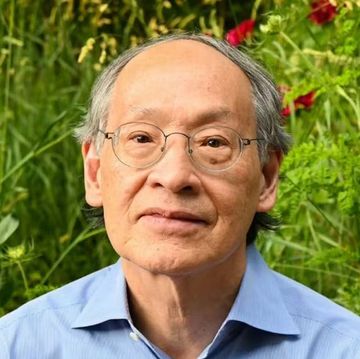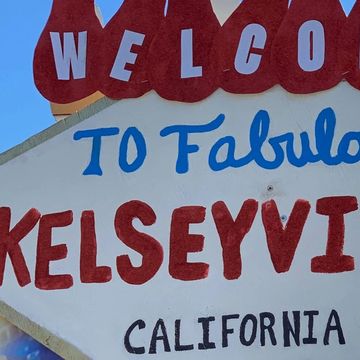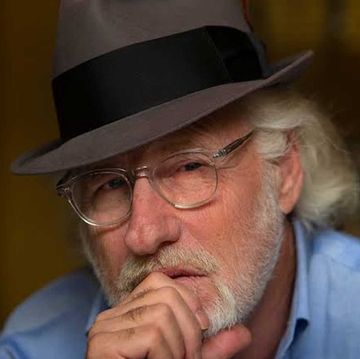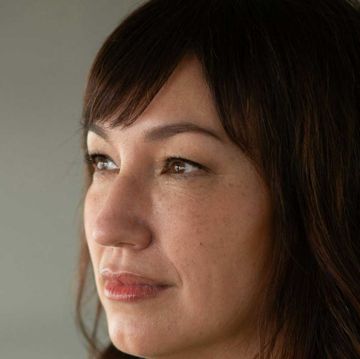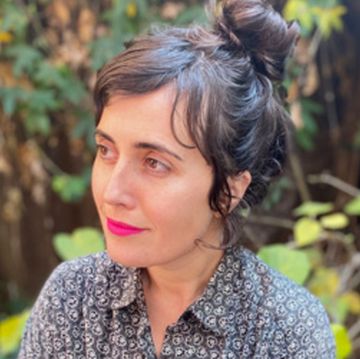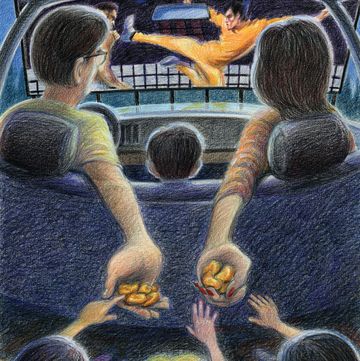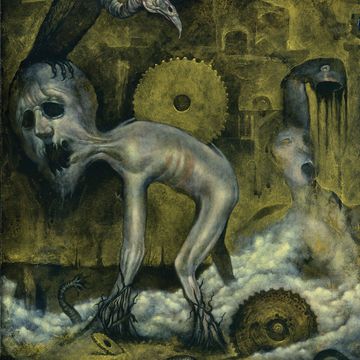For over a decade, the diarist Anaïs Nin led a double life, married to two different men on separate coasts of the United States. One husband was a wealthy filmmaker and banker in New York City, who provided Nin with a cosmopolitan lifestyle full of friends and luxuries. The other husband was a handsome forest ranger 20 years Nin’s junior, with whom she had passionate trysts in a mountainside cabin in Sierra Madre, California. Neither man knew about the other. Nin divided her time between them, flying back and forth for six-week stints. She called this balancing act her trapeze.
Everyone I’ve told this story to has either laughed or said something like “Good for her.” After all, who hasn’t wondered about the path not taken, the home in another city or the arms of a new partner? And here Anaïs (pronounced “anna-ees”) Nin seemed to have found a way to live two experiences at once: a sophisticated urban life on the East Coast and a romantic pastoral one on the West. It’s even more unusual because she was a woman. At a time when polyamory and open relationships were unheard of, and when women were funneled into narrow channels leading to marriage and motherhood, Nin seemed to be living on her own terms.
This article appears in Issue 24 of Alta Journal.
SUBSCRIBE
The reality, of course, was more complicated.
The first volume of The Diary of Anaïs Nin was published in 1966, when Nin was 63. It covers her affair with the author Henry Miller and his wife, June, in 1930s Paris. Released during the sexual revolution, Nin’s diaries couldn’t have been better timed. Miller’s novel Tropic of Cancer—which Nin edited and helped fund—was published in the United States in 1961 after decades of censorship. Her diaries seemed to be the story behind the story, the female version of Miller’s novel. Here was a portrait of a woman as a young artist, a feminist role model writing about desire and sex, living independently and passionately. Here was a female Proust, complete with the French accent.
But for most of her life, Nin labored in obscurity. Her nine works of fiction were ignored and passed over, so much so that she self-published four of them. Despite her certainty that she was a major force in literature, in the 1940s and ’50s she was still financially dependent on her East Coast husband, Hugh Parker Guiler, or Hugo. Swinging between two lovers may have started as a way to have everything, but it became a piecemeal existence full of guilt and obligation. As she recorded in her journal in 1952, “[a friend] writes me: ‘Whether you are Cinderella in the scullion (in Sierra Madre) or Cinderella at the Ball (in New York), the wand is in your hands, Anaïs.’ Of course, I never believe this. I feel controlled, dominated, and pulled by my two loves at each end of the trapeze.”
I both like and dislike Anaïs Nin. Reading her first diary, I find some of her sexual awakening grandmotherly in the most lavender-talcum-powdery of ways. By today’s standards, Nin’s unrequited passion for June Miller feels commonplace, and her discovery of the clitoris well into adulthood makes me grateful for the health classes I took in school. The frequent criticism that Nin was a narcissist is dismissive of her artistry, yet she did record every compliment paid to her, many of which are suspiciously effusive. (For example, she wrote that Miller told her, “You are always asked to solve problems, to help, to be selfless. And meanwhile there is your writing, deeper and better than anybody’s, which nobody gives a damn about and nobody helps you to do.”)
Her behavior was problematic. She was a liar who hid behind personas, presenting herself differently depending on who was around. Even her journals are as much fiction as fact, for she rewrote them for decades. When she was 30, she had a brief incestuous affair with her estranged father, a Spanish pianist and composer who had abandoned the family when she was a child. Even more troubling, for me, was her predatory conduct. When Nin was in her 40s, she had a liaison with a 17-year-old boy who wrote her a fan letter. He dropped out of Yale to be with her until his father intervened. Other lovers were young men who’d barely entered adulthood.
Yet, at a time when the Supreme Court has overturned Roe v. Wade, revoking the right of abortion for millions of Americans, it’s more important than ever to acknowledge women’s expressions of their experiences around sex. Nin was a pioneer in this, writing openly about her private longings and pursuit of pleasure. She began her diaries at age 11 and continued throughout her life. Today, there are 18 journals in print as well as novels, short stories, and erotica. Her work deals with issues that are still controversial, from illegal abortion to extramarital affairs to the aforementioned incest. Nin elevated these topics and insisted they were worthy subjects for art.
What Nin left out of her published diaries, at least initially, was her husband Hugo. They married in 1923 in Cuba, and the following year, the bank that employed Guiler sent them to Paris. Nin had been born in France and immigrated to the United States after her father walked out on the family. When she met Guiler, she was working as an artist’s model and dancer. He financed her lifestyle and stayed with her through her many liaisons. In fact, the two were still together and living in New York in 1947 when Nin encountered Rupert Pole in an elevator and discovered they were going to the same party.
Pole was striking. He was a struggling actor and looked the part—tall, with brown hair, long-lashed sparkling eyes, plump lips, and a Dudley Do-Right chin. He was 28 and Nin was 44. The attraction was instant. In Trapeze, a posthumously published diary about the bigamy, Nin wrote, “As I saw his handsome face, I said to myself: Caution. Danger. He is probably homosexual.”
But Pole wasn’t gay, as Nin found out when she invited him to dinner at her home two days later while Guiler was away in Cuba. Their chemistry, she wrote, surprised her:
I, who never responded the first time in any love affair, responded to Rupert. He was so vehement, lyrical, passionate, and electric.… The candles burned away. Tristan and Isolde sang sadly. But Rupert and I twice were shaken by such tremors of desire and pleasure that I thought we would die, like people who touched a third rail in the subway tunnel.
Nin’s new romance consumed her. She and Pole took multiple trips together, driving across the United States, from New York to Los Angeles; throughout the Southwest; and to Mexico. They stopped at a motel in Las Vegas, where, she wrote, “our caresses became electric and feverish, wild. He fell asleep murmuring: ‘The desert is good for us.’ ” In Colorado, they enjoyed each other on a riverbank where “the cruel green flies stung us while we made love.” When Pole gave up acting and enrolled in forestry school at UC Berkeley, Nin convinced Guiler she needed an apartment in San Francisco, claiming that the pressure of living in New York, with its constant literary rejections, was damaging her health. He agreed, and she rented a run-down shack she called her “tea house.” Soon after, Guiler insisted she relocate to a more put-together and spacious apartment. Pole moved into the spare room.
After this, Nin began flying back and forth between the men and would do so for the next two and a half decades. This was hardly her first affair, but Pole stood out from her other lovers. As Tristine Rainer, Nin’s friend and mentee, told an audience at Los Angeles’s Silver Lake Branch Library in 2017 when promoting her memoir about their relationship, “she was bound to Rupert by the passion that she had looked for and looked for. She knew she was not going to find a man who could meet her passion as he did. She certainly experimented enough to find it, so when she finally did, she knew what she had.”
The town of Sierra Madre, where Nin lived with Pole after San Francisco, bleeds into the sprawl of Los Angeles County. When I visited last summer, I could sense the mountain village it had been in the 1950s. There was something all-American about the place. Western architecture lined the streets, where brick buildings with dark windows housed boutiques and cafés. Deciduous trees hung over cars parked perpendicular to the sidewalk, and a large American flag flew in the town center. Mount Wilson, a peak in Angeles National Forest, loomed behind the city, and morning light filtered over it like gold dust.
In 1950, the U.S. Forest Service assigned Pole to the ranger station near the mountain. With him came his “wife,” Mrs. Anaïs Pole. He told people that she had a job as a writer in New York, which was how she explained the constant trips to the East Coast. Pole knew about Guiler, but believed the marriage was over except for divorce papers—which he wanted Nin to sign so they could get married. But that wouldn’t happen for another five years.
Guiler, on the other hand, didn’t know Pole existed. As Deirdre Bair writes in Anaïs Nin: A Biography, “somehow she persuaded him that she lived in an isolated mountain cabin on a vast ranch run by an eccentric woman who had no telephone and required her paying guests to live in quiet isolation.” Moving into her role as “wife” of two men, Nin wrote, “The web of lies is so immense I get lost in it.”
When in Sierra Madre, Nin and Pole frequently dined at a restaurant called Café de Paris, which doesn’t seem to exist anymore, so I opted for the next best thing: Monsieur Crêpe, specializing in casual French food. Sitting at a table underneath an oak tree, I fanned myself with the menu. It was unusually hot. Fumes from a nail salon wafted onto the sidewalk, and the man next to me was complaining that his granddaughter was being taught critical race theory in school. A dance class must have let out, for people kept walking by with toddlers dressed as ballerinas.
My crêpe was too sweet, and I couldn’t finish it. I thought, however, that eating mediocre French food was an apt metaphor for Nin’s time there. She hated Sierra Madre. The California she moved to was bogged down by postwar conservatism. McCarthyism was in full swing, and Hollywood was blacklisting anyone with communist ties. While Nin loathed politics and complained whenever Pole read “poisonous” Time magazine, her lifestyle was anything but conservative. Sierra Madre struck her as provincial and culturally empty. She wrote, “I would like our home too if it were in Europe, not sunk in the oceans of a tedious American atmosphere, uniform and like canned fruit, so externally perfect and flavorless.”
The cabin they shared is worth $1.9 million today. Built in 1935, it’s in a residential neighborhood leading up to the mountain, a mix of mansions and gentrified ranch houses piled on a hillside. It’s three times bigger than in Nin’s day, yellow, with an arched glass door and a big oak tree out front. When Nin lived there, it was a one-bedroom beige stucco with green trim, isolated enough that the unnerving howls of coyotes pierced the silence at night.
In Sierra Madre, the romantic bubble with Pole popped. He was a man of habit, and their life fell into a routine that included seeing movies three times a week and entertaining guests who bored Nin. By day, tourists barged into the cabin—which doubled as the ranger station—asking for directions or to use the bathroom. Pole was frugal, insisting they live on $200 a month and save the other $50 of his salary, which meant penny-pinching and bickering over expenses. He refused to let Nin hire a house cleaner even after she offered to pay for it (with Guiler’s money).
Despite the unconventional nature of their relationship, when Nin was with Pole, she was a housewife who was too busy to write. Even today, studies find that women do two more hours of housework than men, and in the 1950s, they did all of it. Nin’s daily schedule:
1 hour in the kitchen—dishes, cleaning, burning garbage
1 hour of 1 room a day—thorough cleaning, sweeping rug, mopping, cleaning pipes
1 hour of errands—shopping, shoes repaired, cleaning suits, tailor, post office
1 hour sewing or mending socks and underwear
1 hour for myself, bathing, care of face, hair, etc.
A little while for letter writing, reading if I’m tired, and then another hour in the kitchen to cook dinner.
It’s no wonder that New York felt refreshing by contrast. “From the moment I unpacked my valises in the light, spacious and graceful apartment, every object and incident conspired to lure and enchant me,” Nin wrote after a stint in Sierra Madre. “White walls, sky, openness. On the table packages of French books from Hugo, announcements of gallery openings.… A big package containing two beautiful Italian dresses.” In New York, breakfast was brought to her on a tray. She and Guiler had tenderness and understanding earned from their long marriage—but she wasn’t sexually attracted to him.
“Anaïs felt a deep commitment and debt to Hugo,” says Steven Reigns, a poet and scholar who serves on the board of the Anaïs Nin Foundation. “I imagine she also had feelings of guilt for her previous affairs. The relationship, though not exactly fulfilling, wasn’t cold or void of passion. Some of their correspondence is also charming and warm. I think there was a great deal of love.”
This wasn’t the first affair Nin had financed with Guiler’s money. In the 1930s, she bought a houseboat to live in with her lover Gonzalo Moré. She covered Henry Miller’s living expenses and supported the publication of Tropic of Cancer. When Guiler paid for Nin to receive psychoanalysis, she slept with her psychiatrist. It’s possible that by the time Pole came along, Guiler chose not to dig too deeply into his wife’s activities.
From the outside, Nin’s juggling of the two men seems comical, like something out of an episode of I Love Lucy. While lying in bed in her New York apartment, she wrote Pole letters describing her hectic (and imaginary) workdays as a journalist, running around on assignment, scarfing down a “drugstore sandwich,” and collapsing into bed at night exhausted, according to Bair’s biography. She invented a Lie Box, a container with the word “lies” written on top, and she wrote down her stories and put them in it to keep them straight. She stored the box in a large purse alongside checkbooks and prescription medication made out to both Anaïs Guiler and Anaïs Pole.
She also enlisted friends to help her. Since she couldn’t have Pole calling her at Guiler’s apartment, she gave him her friends’ phone number instead. Whenever Pole asked for her, they said she was out or busy writing. Then Nin would go to the pay phone near her apartment and call Pole back using lead washers the size of quarters to avoid paying the expensive long-distance fees. Other accomplices called her in Sierra Madre pretending to be an editor with an assignment requiring her to return to the East Coast. Once, when Pole showed up in New York, she found herself running around concocting lies and half-truths to keep the men apart. At one point, her friends were too busy to help, leaving her alone in her deception. “The desperation of it!” she wrote. “Why? Why?”
Increasingly, Nin felt trapped. While her sexual desire for Pole was important to her, she also wanted to live an exciting, independent life as an artist, as many of her male peers, including Miller, were doing. While the bicoastal relationships may have seemed a way to achieve that at first, she soon found herself even more constricted. Her writing suffered. She railed against her husbands in her diary and plotted ways to free herself, fantasizing about living in Paris or on a houseboat in Sausalito.
“What woman was ever caught between two such ultimately destructive marriages,” she wrote, “one in which I must pretend a physical desire I do not feel, another in which I risk all the sorrows of an aging woman loved by a young man, desertion, and the end of illusion?”
At midlife, Nin had to reckon with the fact that her career wasn’t going well. Despite decades of effort, the literary world remained indifferent to her. She was working at a time when realistic fiction was all the rage and masculine stars like Ernest Hemingway and John Steinbeck dominated the discourse. A woman writing about her sexual experiences and looking inward to her psyche was swimming against the trends. Even though Nin believed she had it in her to be an important force in literature, she was still dependent on the men in her life to feed and clothe her.
I am still only stealing what I want, being unable to create it. I have nothing of my own. From my writing I received perhaps $250 a year, the advance on each book, and no more.… And so how can I speak of my life unless it is within the framework made by Hugo and Rupert?
Reading this, I’m struck by how little some aspects of a writing career have changed in the past 70 years. In 2018, the Authors Guild reported that the average salary for writers was around $6,000 a year, far below a living wage. For many authors, this means supplementing income with a second job or depending on someone else to fund the work. Often that person is a spouse. (Although rarely two spouses…) Over time, financial dependency on a loved one can lead to guilt and despair, especially if the work isn’t finding readers.
I can only imagine how much harder it was for Nin in the 1950s, facing industry prejudices against female writers and the controversial nature of her subject matter. She was stifled and depressed. The irony of her having two marriages is that she had to perform the role of a wife twice, which meant twice the management of a household and twice the appeasement of a husband. It’s telling that she found time to write only on an airplane, when she was suspended between them.
Things came to a head in 1955 when, on a trip to Arizona, Pole insisted they elope. Nin was still married to Guiler (whom Pole believed she’d divorced by then), but after eight years, she had run out of excuses. When Pole took her to the justice of the peace, she gave in and became an official bigamist, writing, “He came out of the place radiant, his eyes blazing, laughing, his lips humid, his smile incandescent: ‘Let’s get married!’ He was at that moment irresistibly beautiful, so gentle, so happy. I felt like a murderer to kill his joy.”
They were married for 11 years, until there were complications with both men claiming Nin as a dependent on their tax returns. Worried about the IRS, Nin confessed the bigamy to Pole. They annulled their marriage, but she stayed on the trapeze.
Luckily for Nin, time caught up to her work. The first volume of her diaries was published three years after Betty Friedan’s 1963 The Feminine Mystique inspired many to join the women’s movement. Nin’s book, presented as the uncensored reality of a woman’s life, hit the zeitgeist perfectly. Fame soon followed. There was an outpouring of fan mail, awards, invitations, interviews, and TV appearances. Nin even had groupies who called themselves the Ninnies. “She became very happy later in life,” Rainer told the audience at the Silver Lake library. “I think that having succeeded as a writer and having her own income was a big part of it.”
More diaries followed, and they also brought in money, and just in time, for Guiler was going broke. Instead of living on $250 a month with Pole, Nin had a 1966 income of $9,500. By the third quarter of 1973, she’d made $62,000—over $400,000 today. But she didn’t leave her husbands as she’d often fantasized. Instead, Pole built her a house in Silver Lake, and she continued her bicoastal commute, remaining with both men until the end—only now, she supported them instead of the other way around.
However, Nin’s reputation took a dive when an ex-friend, novelist Gore Vidal, reviewed the fourth volume of her diary for the Los Angeles Times in 1971. He pointed out that Nin was “married to a wealthy businessman (not mentioned in the earlier volumes)” and “played at being a poor artist.” Nin looked like a hypocrite. Many had assumed she’d earned her freedom on her own, and now they saw that she’d long been supported by a husband. At readings, things turned ugly. Audience members confronted her, rolled their eyes when she spoke, and booed. In one incident, Nin left the stage in a huff. If such a revelation happened today, she would definitely be canceled.
But Nin was a trailblazer. She was a person who, for better or worse, carried out her fantasies, and the emotional truths she recorded in her diaries still resonate today. “What human beings only dream, I acted out,” she wrote. “I obeyed the dream. But I was unable to free myself of guilt.”
In the final two years of her life, Nin suffered from cervical cancer and wouldn’t let Guiler come visit her in Silver Lake—she said she wanted him to remember her as beautiful and healthy. Toward the end of 1976, while she was dying, Pole telephoned Guiler for her. From across the country, Nin asked Guiler to grant her “absolution,” suggesting that the guilt stayed with her until the end.
Her last letter was to Guiler, expressing her gratitude for him. She wrote, “I am proud to have loved you all of my life.”•
Joy Lanzendorfer’s first novel, Right Back Where We Started From, was published in 2021. Her work has appeared in the New York Times, Washington Post, Raritan, the Atlantic, and Ploughshares as well as on NPR and for the Poetry Foundation, among others.






